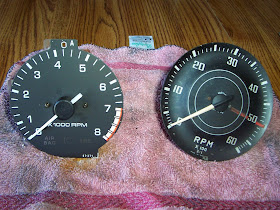In the past, I have bought cars just because they were cheap...and why not? I love cars. I'd like to own every car once in my life. I've always said I like them new, old, shiny, dull, running, dead, pristine, dented, exotic, pedestrian, rusty or clean....I like them all. A few cars I had just for a short while since they were cheap and seemed like a good idea are the following: 1960 Ford Ranchero, 1977 Toyota Corolla "lift back", 1982 Toyota Tercel, 1966 Pontiac Le Mans, 1977 MG Midget.....
I was going to school in Fremont, California back in 1998 when I spied this seriously beat-down Ranchero on the side of the road with a for sale sign in the window. Me, always being a sucker for a cool old American car that looks like it's going to be cheap to buy, I pulled over and jotted down the phone number. I later called about the car. It sat funny, because, as the seller explained, it was missing the right front coil spring...(Huh?) How does that happen? Someone removed it and couldn't figure out how to put it back in I guess. The drivers door had been replaced after having been side-swiped and the B pillar was a little messed up. But it ran!!! It had a 6 cylinder and two speed automatic (which leaked ATF from the front pump seal). The car was pretty shabby inside and out, but I bought it anyway for $400. Score!
I cut and re welded the B pillar so the door would close normally and slathered a little sloppy bondo here and there and took to painting her in hardware-store cans of white and black primer. I used it as a commuter and to move stuff occasionally. It was a fun and comfy no-frills car that was cheap to own. It was, however, a worn out jalopy, and I sold it down the road after about a year and a half.
I bought it in gray primer. I parked it on the street away from my apartment so people wouldn't associate it with me.
.JPG)
.JPG)












